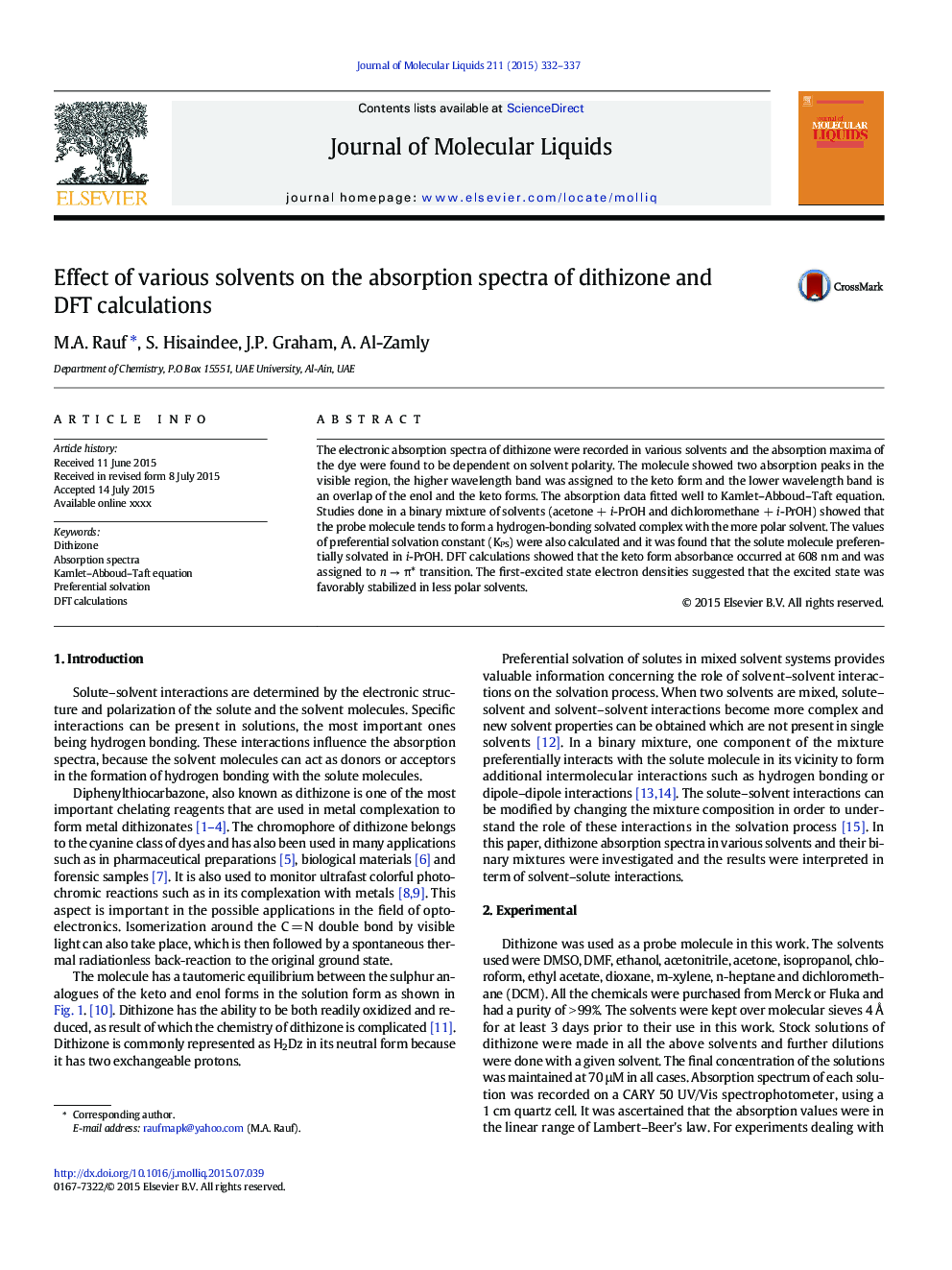| Article ID | Journal | Published Year | Pages | File Type |
|---|---|---|---|---|
| 5410642 | Journal of Molecular Liquids | 2015 | 6 Pages |
Abstract
The electronic absorption spectra of dithizone were recorded in various solvents and the absorption maxima of the dye were found to be dependent on solvent polarity. The molecule showed two absorption peaks in the visible region, the higher wavelength band was assigned to the keto form and the lower wavelength band is an overlap of the enol and the keto forms. The absorption data fitted well to Kamlet-Abboud-Taft equation. Studies done in a binary mixture of solvents (acetone + i-PrOH and dichloromethane + i-PrOH) showed that the probe molecule tends to form a hydrogen-bonding solvated complex with the more polar solvent. The values of preferential solvation constant (KPS) were also calculated and it was found that the solute molecule preferentially solvated in i-PrOH. DFT calculations showed that the keto form absorbance occurred at 608 nm and was assigned to n â Ï* transition. The first-excited state electron densities suggested that the excited state was favorably stabilized in less polar solvents.
Related Topics
Physical Sciences and Engineering
Chemistry
Physical and Theoretical Chemistry
Authors
M.A. Rauf, S. Hisaindee, J.P. Graham, A. Al-Zamly,
